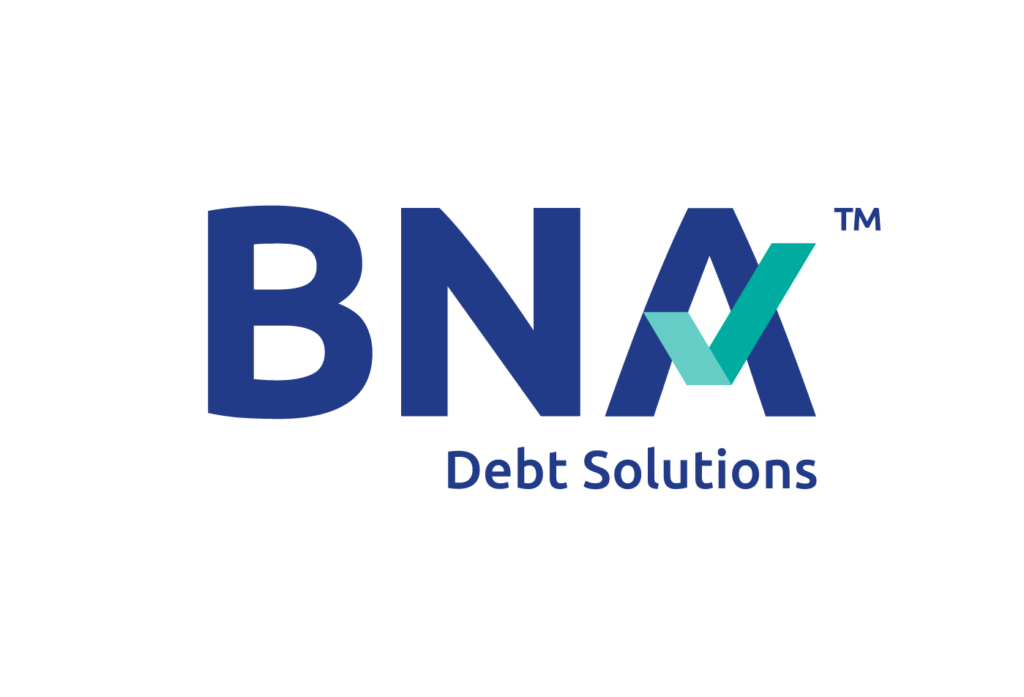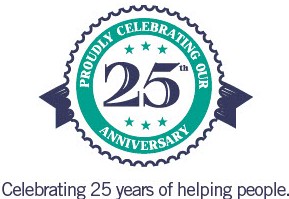As the month ends, the stack of bills grows taller. The mortgage payment is looming, and credit card balances are climbing. You start to wonder: Would folding this debt into your mortgage give you the breathing room you need?
If you’re considering debt consolidation, it isn’t a failure. It’s a sign that your cash flow is tight and you’re seeking more breathing room. At BNA, we help Albertans explore options that protect their home and future, not just how to get by this month.
This guide explains mortgage loan debt consolidation in clear language: how it works, who actually qualifies, the real cost when interest accumulates over decades, and how an interest-free Consumer Proposal provides a predictable payment without risking your home.
Important note: BNA Debt Solutions is not a lender, and we do not offer mortgage refinancing products. Our role is to help you understand all your debt consolidation options and choose the one that safeguards your home, your cash flow, and your long-term goals.
Does Refinancing Really Solve the Problem?
If you’re hoping refinancing is the big reset button, here’s the quick truth: Mostly, it replaces many small bills with one larger bill. When you refinance, you combine credit card debt, personal loans, or a line of credit into your existing mortgage so you make a single payment to your mortgage lender (weekly, bi-weekly, monthly, etc., per the terms of your mortgage).
- What it really does: Merges credit card debt, personal loans, or a line of credit into your existing mortgage, so you pay just one payment to one lender.
- Yes, there’s an advantage: You often get a lower interest rate than on your credit cards and a simpler payment, which can help with short-term cash flow.
- But here’s the catch: You’re trading short-term balances for a much longer repayment period (often 25–30 years), which can increase total interest costs, and the debt becomes secured by your home.
- And it’s not automatic: Many homeowners don’t qualify due to income, credit, or lender rules. Even if you qualify, refinancing can still cost money in fees or penalties (like prepayment penalties, legal or discharge costs, appraisals).
If that gives you pause, you’re not alone. Next, we’ll walk through the real-world math, the collateral risk most people overlook, and the typical 0% interest alternative that can free up cash flow without adding more debt to your house.
What You Should Know Before Refinancing
- Refinancing means one payment at a lower rate but over a longer timeline. You tidy up bills but extend debt over 25–30 years, which increases total interest.
- Alberta math: If you roll $100,000 of debt into your mortgage at 3.5% over 25 years, your payment increases by about $230 every two weeks. In the end, that $100,000 ends up costing around $150,000 with interest.
- Proposal math: With a Consumer Proposal, you’d make fixed payments of about $1,700 a month for 5 years. This totals roughly $102,000, about $48,000 less than refinancing, and you’d be debt-free in 5 years instead of 25.
- Refinancing turns unsecured debt into secured debt against your home (missed payments = collateral risk).
- Not everyone qualifies. Income, credit, and lender rules matter, plus fees and penalties (prepayment, legal fees, discharge, appraisal) can cost money.
- Refinancing isn’t the only way to keep your home — and in some cases, it adds more strain.
- Consumer Proposal (0% interest): One monthly payment, mortgage remains outside of the process, legal protection (stay of proceedings), and a rebuild plan with an LIT.
- Quick comparison:
- Refinancing offers a lower rate now, but costs interest for decades and risks your home.
- Proposal typically has 0% interest, a clear finish line (up to 60 months), and assets are protected when you keep secured debts current.
- Other options like a debt consolidation loan, HELOC, credit card balance transfer, and debt management plan exist, but each has trade-offs.
What Is Mortgage Loan Debt Consolidation?
Mortgage debt consolidation (sometimes called a debt consolidation mortgage or refinancing to consolidate debt) means you take unsecured debt like credit card debt, personal loans, or a line of credit and roll it into your existing mortgage. Instead of managing multiple bills and minimum payments, you get one monthly payment through your mortgage lender.
How It Works (Without the Bank Jargon)
- You already own a home and have built equity (often, lenders require you to keep at least 20% equity after refinancing).
- A bank or credit union (or other financial institution) lets you borrow against your equity.
- Your mortgage balance increases to include your current mortgage plus your unsecured debts.
- You repay the larger mortgage at a lower interest rate than most credit cards, but over a much longer repayment period (often 25–30 years).
Why It Feels Like a Quick Fix at First
- Fewer bills: one single monthly payment instead of many.
- Lower rate than credit cards: moving from, say, 20% to ~5–7% looks like big savings.
- Short-term cash flow relief: lower monthly payments can feel like a reset.
- Potential to improve credit score if you stop adding new debt and your credit utilization ratio falls.
The catch? You’re taking short-term debt and spreading it over decades. That can dramatically increase total interest costs, and it puts your home at risk if life changes and you can’t keep up.
The Cost You Don’t See: Low Rate, Decades of Interest (With Alberta Numbers)
Let’s use a simple, realistic scenario we see often in Alberta:
- $100,000 of credit card and other unsecured debt
- You roll it into your mortgage at 3.5% (bi-weekly payments, 25-year amortization)
What changes when you refinance to include the $100k?
- Bi-weekly mortgage payments increase from $1,039.25 to $1,270.19 (about +$230.94 per pay period).
- Total interest over 25 years rises by $50,113.41 compared to keeping the mortgage at its original balance.
- Put simply, the $100,000 of unsecured debt, when converted into mortgage debt over 25 years at 3.5%, costs $150,113.41 (plus applicable fees) ($100,000 principal + $50,113.41 in additional interest).
Now compare that to paying the same $100,000 through a Consumer Proposal (more on this below) at 0% interest with fixed payments for up to 5 years. Assuming you repaid 100% of the debt owed through a Consumer Proposal, this would equate to $1,700/month for 60 months, you’d pay $102,000 in total, and be finished in 5 years, not 25.
Bottom line from this illustration
- Cost of refinancing $100K into your mortgage: approximately $150,113 over 25 years (plus applicable fees)
- Cost of a Consumer Proposal: approximately $102,000 over 5 years
- Estimated savings by choosing a Proposal instead of refinancing: roughly $48,113.
In general, over long repayment periods, many borrowers end up paying about 1.5 to 2 times the original unsecured balance when they refinance; in some cases, it can approach 2 to 3 times if terms extend and prepayments aren’t used.
Also factor costs: Refinancing can involve fees/penalties depending on your mortgage terms (e.g., prepayment penalties, legal fees, discharge costs, appraisals).
And remember: with typical credit cards at around 20% interest, a minimum payment can be almost entirely interest. On $100,000.00, that’s roughly $1,666.67 in interest every month until you start paying down the principal. Refinancing removes that high rate but exchanges it for decades of lower interest rates.
When Your Credit Card Debt Becomes a Mortgage Problem
When you consolidate your debt into a mortgage, you’re converting unsecured debt (credit cards, personal loans) into secured debt tied to your house. If your financial situation changes due to job loss, illness, divorce, or higher living costs, and you fall behind, the consequence is different:
- With unsecured debt, creditors can pursue collection, which can be stressful, but your home isn’t at risk as collateral.
- With a larger mortgage, your home is on the line; missed payments can trigger foreclosure proceedings far faster than with unsecured debt.
That’s why we say: refinancing helps in the short term; it can hurt in the long term.
“If I Don’t Refinance, I’ll Lose the House”… Let’s Reality-Check That
We hear it all the time: “If I don’t refinance, I’ll lose the house.” In reality, many Albertans we meet:
- Don’t qualify to refinance even with equity due to low or fixed income, credit score issues, non-traditional income like contracting or self-employment, age, or recent separation or divorce.
- Feel pressure to sell, only to face rising rent prices and tighter cash flow in Alberta.
- Already have a more affordable mortgage than any alternative and need a plan to keep that stability.
Ironically, refinancing can increase stress through higher payments, penalties, or tighter terms, leaving you more strained than before.
If that’s you, you’re not alone, and you don’t have to “figure it out” by yourself. Asking for help isn’t giving up; it’s smart money management.
How a Consumer Proposal Can Free Up Cash Without Putting Your Home at Risk (In Most Cases, 0% Interest)
A Consumer Proposal is a legal, federally regulated process to combine your unsecured debts into one manageable monthly payment for up to five years, usually at 0% interest. It is administered by a Licensed Insolvency Trustee (LIT). This process aims to consolidate unsecured debt into a single predictable payment, often with little or no interest, while safeguarding your home and other secured assets as long as payments remain current.
When Cash Is Tight, This Is Why Homeowners Choose a Proposal
- No interest: Every payment reduces your outstanding debt, and you don’t pay interest. Even if you pay off most or almost all of your unsecured debt through a proposal, it’s at 0% interest, so each dollar decreases what you owe.
- Keep your assets: Your home, car, and retirement savings (RRSPs) are protected when you stay current on secured debts.
- One monthly payment: A single, fixed payment based on your budget. Real relief without prolonging debt over decades.
- Structured & supportive: Built-in financial counseling helps improve money management skills and habits.
- Credit impact with a clear timeline: A proposal affects your credit score but usually less than bankruptcy, and stays on record for up to 6 years from signing (or 3 years after completion, whichever comes first). You can start rebuilding during the proposal with responsible use (e.g., a small credit-builder card and on-time payments).
We won’t tell you to “just refinance” or “just file a proposal.” We’ll explore your options, show the trade-offs, and help you decide based on your numbers, your equity, and your goals.
Mortgage Refinancing Vs a 0% Interest Consumer Proposal
First, What Each Option Actually Is
- Mortgage refinancing to deal with unsecured debt: Borrow against home equity to pay off credit cards, multiple debts, personal loans, or a line of credit, turning them into secured loans under your mortgage.
- Consumer Proposal: A legal process to reduce and consolidate your debts into one affordable payment (up to 60 months), 0% interest.
Interest rate & repayment period
- Refinance: Lower interest rate (typically 5–7%), but over 25–30 years. Total interest costs can be 1.5–2 times the original debt due to the long repayment periods.
- Proposal: 0% interest, fixed timeline (maximum 5 years). Payments go directly to the principal, and in many cases, you repay less than the full amount owed.
How Each Option Feels in Your Budget
- Refinance: Often lower monthly payments initially, but you’ll pay interest for decades.
- Proposal: One monthly payment based on what you can truly afford, making cash flow easier without adding interest.
Credit score & access to credit
- Refinance: This may improve your credit over time if you stop taking on new debt, keep balances low, and maintain healthy habits.
- Proposal: Impacts your credit temporarily; access to new credit is limited during the program, but it improves after completion (and the note typically clears 3 years post-completion).
What’s at Risk (Especially Your Home)
- Refinance: High risk as you’re tying unsecured debt to your house.
- Proposal: None to your house (keep making your mortgage payments). Consumer proposals only deal with unsecured debt.
Is This Path a Match for You?
- Refinance: Homeowners with strong income, good credit, and enough equity who value short-term payment relief and are comfortable with long-term interest rates.
- Proposal: People struggling with unsecured debt (homeowners or not) who want debt relief without risking their home, prefer no interest, and want a clear 5-year end date.
Pros & Cons at a Glance (Legal vs. Non-Legal Options)
Legend: ✅ Benefit ❌ Drawback ⚠️ Risk/Depends
| Category | Factor | Mortgage Refinancing (to deal with unsecured debt) | Consumer Proposal (to deal with unsecured debt) |
| ✅ PROS | Lower rate vs. credit cards | ✅ | ✅ (0% interest) |
| Only one monthly payment | ✅ | ✅ | |
| May improve short-term cash flow | ✅ | ✅ | |
| Legally binding protection from creditors | – | ✅ (stay of proceedings) | |
| Keep assets (home, car, RRSPs) | ⚠️ (must keep mortgage current) | ✅ | |
| Fixed plan with a clear end date | – | ✅ (max 5 years) | |
| Includes financial counselling | – | ✅ | |
| ❌ CONS | Risk to your home if you fall behind | ❌ | – |
| Can pay 1.5–2× original debt over long amortization | ❌ | – | |
| Doesn’t reduce total balance (just restructures it) | ❌ | – | |
| May be denied based on income/credit | ⚠️ | ⚠️ (court can annul if you stop performing) | |
| Credit impact | – | ❌ (temporary; removed after completion timeframe) | |
| Must stay current to avoid losing progress/protection | ⚠️ | ⚠️ |
Important Note: BNA Debt Solutions is not a lender. We do not offer or advise on mortgage products. Our role is to educate, outline trade-offs, and, when appropriate, administer a proposal that fits your situation. Refinancing can also involve fees or penalties depending on your mortgage terms (e.g., prepayment penalties, legal and discharge costs, appraisals).
What About Other Debt Consolidation Options?
We’ll walk you through these, too, and when they make sense:
1) Debt consolidation loan (bank or credit union)
A new loan that pays off multiple credit cards and other loans, so you have only one monthly payment.
- Pros: Simpler, sometimes a lower interest rate, predictable timeline.
- Cons: Approval depends on credit score, income, and credit reports; may require a co-signer; rate may still be high; you’ll pay interest the whole way.
2) Home equity line of credit (HELOC) / equity line of credit
A revolving home equity loan secured by your property.
- Pros: Lower rate than most cards; flexible access to funds.
- Cons: Easy to re-borrow; secured by your home; if you only make minimum payments, you can stretch debt for years; rates are often variable and may rise.
3) Credit card balance transfer
Move balances to a promotional, lower interest rate.
- Pros: Can save money short-term on interest costs.
- Cons: Promos expire (typically 6–12 months in Canada); transfer fees; if you don’t pay off before the promo ends, the rate can jump, and the debt lasts longer.
4) Debt management plan (through a credit counsellor)
An arrangement where a non-profit agency negotiates lower interest and a single monthly payment.
- Pros: Structure and support; can lower payments and interest.
- Cons: Not all creditors participate; you still pay interest, and it’s not a legal proceeding.
5) Consumer Proposal (legislated, 0% interest)
This is the option we do offer at BNA. If you’re struggling with unsecured debt and need a structured, legally supported path forward, a Consumer Proposal may be the right fit. Our Licensed Insolvency Trustees work with you directly to create a payment plan based on your budget, not creditor demands.
As above: 0% interest, one monthly payment, legally binding, protects assets. Often, the most cost-effective way to consolidate your debt is without risking your home.
We’ll also discuss student loans and federal student loans considerations, credit limit issues, and whether consolidating could hurt your credit in the short term. How to rebuild so you come out stronger.
If you’re not sure whether you qualify or how this compares to your other options, we can walk you through each scenario and help you understand what’s possible—without pressure or judgment.
What $100,000 of Debt Looks Like in a Mortgage vs. a Consumer Proposal
Let’s suppose the situation here is an Alberta homeowner with $100k in unsecured debt, good equity, tight cash flow, and multiple bills.
Path A – Lower Now, Longer Later
- Payment impact: +$230.94 bi-weekly (from $1,039.25 → $1,270.19)
- Total cost for that $100k over 25 years at 3.5%: ~$150,113
- Trade-off: Lower short-term payments; much higher long-term interest; home at risk if income changes
Path B – Protect the Home, Clear the Debt
- Payment: ~$1,700/month for 60 months
- Total cost: ~$102,000
- Outcome: Debt done in 5 years; keep the house; clear, predictable end date
- Difference: Save ~$48,113 compared to refinancing.
The costs depend on your income, credit, and equity. What matters is looking at each option side by side, so you can see how payments, timelines, and risks compare.
Quick Answers to the Questions We Hear Most
Will CRA/tax debt fit in a proposal?
Often yes. Tax balances are typically unsecured debt and can be included.
What about a HELOC or home equity line I already have?
It’s secured; you’ll have to keep this current and target the unsecured side for relief.
Will creditors still call me?
A filed proposal triggers a stay of proceedings, which pauses collection on your unsecured debts.
When does debt consolidation hurt?
When interest costs extend for decades, you pay interest longer, and your secured loans put the home at risk.
Can I offer a lump sum in a proposal?
In some cases, yes. Talk to an LIT about a lump sum vs. a single monthly payment plan.
What about student loans or federal student loans?
We’ll review eligibility windows and how they interact with proposals before you choose. Only loans older than 7 years since you ceased being a student can be discharged in a proposal.
We’ll Help You See the Options and the Numbers Clearly
If you’re feeling stuck between debt consolidation mortgage lenders, debt consolidation companies, and “DIY” options like credit card balance transfers, take a breath. We’ll help you:
- Map your debts (credit cards, other loans, line of credit, current debts).
- Review cash flow, credit reports, and credit rating.
- Compare scenarios (refinance vs. proposal vs. debt management vs. new loan) across monthly payments, total cost, timeline, and risk to your home.
- Protect your retirement savings and long-term plan.
- Choose a path you feel confident and in control of.
You’ll leave with a clear view of how to consolidate your debt, whether that’s a debt consolidation loan, a home equity line, a debt management plan, or a Consumer Proposal. No hard sells. Just facts, options, and a plan.
When You’re Ready, Support Is Available
You don’t have to gamble your home to get a single monthly payment. If you want a Alberta-specific walkthrough of your options, including an interest-free plan that protects your home, contact us. Talk to a Licensed Insolvency Trustee at BNA. We’ll show you where you stand today, what each path costs tomorrow, and how to become debt-free faster without sacrificing your future.
Explore your options with a trusted advisor and choose the path that protects what matters most.




